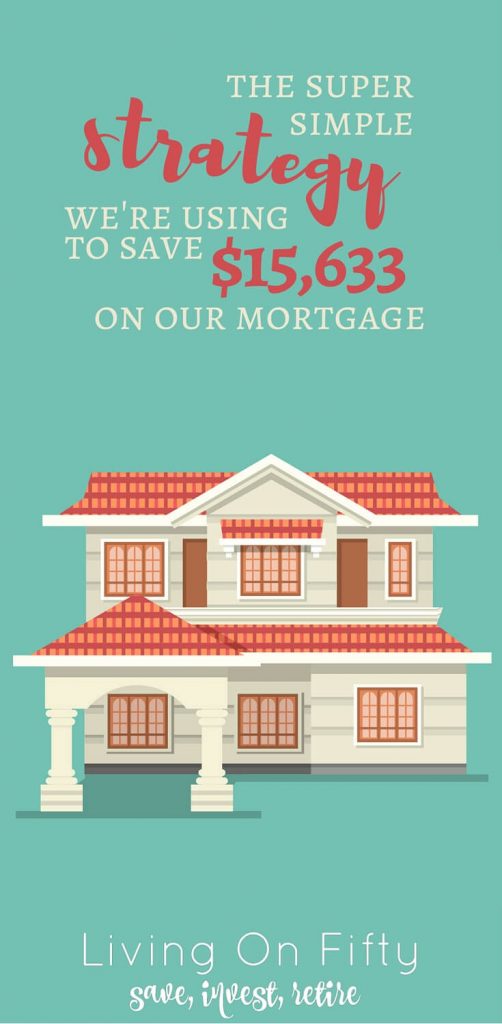Financial decisions are tough.
Even if you have a head for numbers, can take emotion out the game like nobody’s business, and are a budgeting rockstar, making complex decisions can still be tough, especially when it comes to paying off your mortgage early.
Case in point: our house.
For 2 years, we had waffled back and forth on what to do. We were paying $40/month in PMI, and were required to do so regardless of the loan-to-value ratio, but since buying the house we had more than doubled it’s value.
But it was only $40/month.
And so we waited…
And debated.
And waffled back and forth over and over, and over again.
Finally, late last year, we found a good solution:
Our Super Simple Strategy
I’ll save you reading this entire thing in case you just want to know what we did: We refinanced our home.
And not with a regular mortgage, but with a home equity loan. We did it after a lot of thought – and a lot of frustration with our previous mortgage provider – as well as quite a bit of research. We knew that our budget could handle a slightly larger payment, or a payment that stayed the same, but with the added cost of monthly savings for insurance and taxes that weren’t held in escrow.
Confused about what I mean? Here’s an example from our budget:
Previous Payment: $469 – includes principle and interest + monthly taxes and insurance, which are held in an account (known as an escrow account) until the payments are due.
New Payment (theoretical): Max of $700
New Actual Payment: $432 principle and interest + $140 for insurance (that we saved on our own, not in an escrow account) + $100 for taxes (that we also saved on our own = $663 total monthly cost.
So, our monthly payment went up, but we had several very good reasons.

Why We Took on A Larger Payment
It seems pretty counter-intuitive to take on a larger house payment, doesn’t it?
Let’s break down the math so you can see exactly why we decided it was a good idea:
The rate: our previous rate was 3.75%. With the new loan, we are paying 4.3% – which also sounds like it would be more destructive than helpful, right?
You would be right, except for these things:
We went from a 30-year loan to a 15-year loan. And since we had already paid on the loan for 2 years, we cut 13 years off the life of payments on the home.
That alone results in a savings of $14,193 in interest. ($30,690.80 on the 30 year loan – $16,497.80 on the 15 year loan)
Then there’s the PMI.
PMI is the private mortgage insurance we were paying for putting less than 20% down on the house. When we bought the house, it needed a lot of work, so the intention was to put money into improving the house, get it appraised, and have the PMI dropped in under a year.
However, somewhere in the fine print it said that we had to pay the PMI on our mortgage for 5 years, regarduless of how much our home appraised for, and what the loan to value ratio was.
Over 5 years, this $40 of PMI each month would have added up to $2,400.
Not the end of the world, but I really hated that they snuck that into the fine print (I didn’t even know that they could do that!)
By taking away 3 years of paying PMI, we saved $1,440.
In total, by refinancing and saving ourselves 13 years of payments, we will save $15,633.
But beyond the monetary benefits, there are a lot of psychological benefits to refinancing.
We no longer have to pay into an escrow account, which means that if we are able to reduce our taxes or insurance, we won’t have to fight – or wait 90 days – to get the excess money we paid in, back. This has happened to us before, and waiting 90 days to get $2,400 of your own money back is NOT FUN.
We also get much better service because we refinanced through our local credit union.
I can’t speak for every single credit union, but most of the stories I’ve heard in all areas of the country are overwhelmingly positive. You get more personalized attention, better rates, and the application processes are simpler.
However, there are a couple of small downsides.
For one, we don’t get monthly statements, a coupon book, or any other monthly documentation. If we physically go into the credit union to pay, they give us a receipt listing our payment and the amount left on the loan, but if we choose to mail a check each month, we just have to trust that when it clears our account it was deposited correctly.
Which leads me to my next point: we can’t make payments online without incurring a fee. Frustrating, in a money culture that rarely uses checks anymore.
But besides those small things, we’re really very happy with our decision.

Interested in trying this super simple strategy for yourself?
You will need to meet a few criteria:
Be prepared to do the math: Making a decision like this one isn’t easy. Because our rate and payment were going up, we had to crunch the numbers to decide if this was the right move for us. in the end, it was, but it may not be quite as advantageous for you. Do the math, work your budget, and make sure you talk to your spouse.
Make sure your credit is in tip-top shape: Don’t utilize more than 10% of your credit cards, have several different account, all in good standing. Don’t make late payments. And use one (or several) of these sites to keep an eye on your credit for free. Credit Karma is especially great because it gives you suggestions for how to improve your credit. The better your credit, the better rates you’ll be able to qualify for.
{While you’re thinking about credit, look into giving your children the gift of good credit using this strategy}
Get a rough idea of your home’s value: Once your credit is in tip-top shape, and you actually start the paperwork for a home equity loan, you’ll be required to pay for an official appraisal for the bank. This will cost you roughly $300, so before you shell out that money, do your own research on Zillow or Realtor.com to find houses of comparable size and features in your area, to see what they’re selling for. This will give you a good idea of how much your house will appraise for. Most credit unions will only loan you up to 85% of the home’s value, so do the math to see if you have enough equity in your home to go through with it.
Meet the credit union’s criteria: Before you start the application process, talk to your credit union to see what they’re basic criteria are. Ask about things like credit scores, debt to income ratio, and what percentage of your home’s value is actually usable. In our case the usable equity was 85%, and the maximum debt-to-income ratio they would allow was 45%.
Then, find your local credit union to start the process!
We are absolutely loving our new rate, our shorter repayment period, and how painless the process of refinancing was.
Even though it was a little tough to understand, in the end once we saw the number we decided it was well worth it!
If you were in our shoes, what would you have done?

This post may contain affiliate links. See my disclosures for more information.













Very interesting strategy, but smart. I don’t blame you for wanting to save that much money in interest. Thanks for sharing!